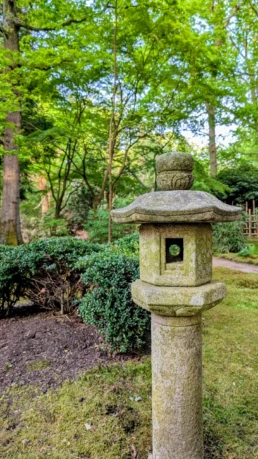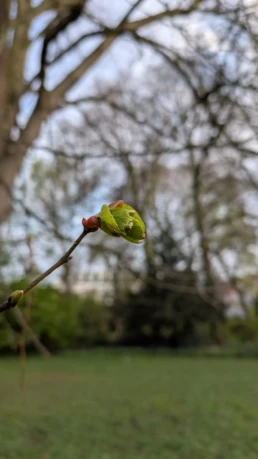Without Our Triggers, Our Growth is Hindered
Mindfulness of our Triggers Help us Grow
For many years, I thought avoiding certain people was a sign of growth — less triggered, less agitated, less angry. But in reality, I was only avoiding what was already present inside me. I was burying it as deep as possible in my consciousness, convincing myself that if I didn’t look at it, it didn’t exist. As I brought mindfulness into my triggers and the benefit I got from being triggers, my perspective changes.
Not being Triggered was Great!
I enjoyed not being triggered because I didn’t have to face my negative emotions — my frustration and anger from my teenage years, my fear of abandonment from childhood, my deep need to control everything to feel safe, a need shaped by being born into and witnessing war in Beirut.
For a long time, it felt like these experiences didn’t exist anymore. I told myself I was fine — life was fine. But deep inside, I was unhappy. Something was missing.
Progress v/s Hindrance
What I thought was progress in my personal development was really just a lens I wore — an illusion that required little effort and brought no real transformation. Looking back, those were not forward steps but backward ones, keeping me further away from the work of truly knowing myself, my experiences, their impact, and how all of it shaped the human being I am today.
Years later, I was lucky enough to meet my ex-partner — someone who held up a mirror to me. That relationship became an invitation to grow, to reflect, to question.
Gabor Maté teaches that relationships are meant to trigger us — not to harm us, but to reveal our patterns and pain. Looking back, I feel grateful. That relationship helped me break down the walls I had built and begin to release the compartmentalization of my feelings.
Understanding Triggers with Mindfulness
Triggers, especially those brought by other people, are invitations to self-reflect.
Instead of reacting, we can pause and become curious:
“Interesting that I had this reaction to their behavior. What is being triggered in me?”
“What past experience does this feeling remind me of?”
For me, a trigger is a reaction that feels disproportionate to the situation — like my response has a deeper story behind it.
For example, I might have a political opinion, but when triggered, my opinion becomes much more intense. That intensity is a cue for me to ask myself:
“Where does this intensity come from?”
“What feelings are fueling it?”
“What old experiences are being replayed in this moment?”
Facing What We Bury
Triggers are all around us. Ignoring them doesn’t make them disappear — it only buries them deeper, where they can grow toxic and chronic.
When we learn to embrace our triggers with curiosity, we create an opening. That opening lets us grow, heal, and move toward a more peaceful mind and body.
It’s not easy work. But it’s the work that brings us home to ourselves.
Enjoy my other reads:
Recover Your Sovereignty: On this link.
Stop Blaming Your Parents: Turning Mindfulness into Self‑Responsibility. On this link.
Living in Peace: How to Find Inner Peace in this World? On this link.
How to Transform Self-Sabotage with Mindfulness and Love? On this link.
Emotional Identity and Pain: Who Are You Without the Struggle? On this link.
External Resources:
Zen & Engaged Buddhism:
Anxious-Preoccupied Attachment and My Experience With It
Discovering Anxious-Preoccupied Attachment and My Experience With It
Growing up, I never thought I was witnessing what’s called “anxious-preoccupied attachment” — a pattern that often shows up as protest or pursuer behaviors. I just felt that my parent wanted the best for me — that they were a bit too pushy, a bit too worried, a bit too anxious that I wouldn’t make it in life. It came from love — genuine love — but it had its consequences.
My approach to life was shaped by this environment. I felt I needed to perform — to outperform — to compete. I had to try to be the first in class, and when I wasn’t — which was often — I felt like my efforts, or even I as a child, weren’t fully appreciated.
Gratitude to my Parents
As I write this, I’m also aware that these experiences are part of my present moment — part of who I am today. And I can cherish this moment. I can feel gratitude for my parents, and for everything that led me here. That gratitude doesn’t stop me from learning about myself, or from releasing what no longer serves me.
A Life Journey
As a teenager, I rebelled against the constant push to perform. Eventually, I realized that if I wanted to reach my own goals, I needed to at least maintain passing grades. The anxious-preoccupied attachment I grew up with showed up as constant connection-seeking — an urge for me to study more, to check if I was reading enough, doing my homework — and a great deal of negative talk, passive aggression, and shame when I fell short.
Over the years, I came to understand that passive aggression and shaming often grow from fear-driven attempts to motivate or keep connection alive. The constant monitoring? That was intolerance of uncertainty — the unknown feeling dangerous. The nagging tone? Hypervigilance that hadn’t found a regulated outlet.
Understanding this shifted my perspective: so much of what felt controlling and emotionally unsafe to me was actually anxiety speaking through their behavior.
With that understanding came a moment of insight: “Yes, of course!” Knowing how my parent lived, I could see their own need for safety, for reassurance, for connection — and for acknowledgment that they, too, mattered. It made sense.
But insight alone didn’t erase the residue those years left in me.
How It Shaped Me
All that externalized anxious attachment turned inward. It showed up as:
Negative self-talk.
A constant need to do the right thing — and perfectly.
Pressure to paddle against the wave, even at the cost of losing relationships.
Anxiety around decisions and the future.
A drive to stay busy, productive, always achieving.
At times, demanding too much from people — colleagues, friends, even loved ones.
How I Deal With It
Mindfulness has become the key to understanding and softening these patterns.
Mindfulness of thoughts, feelings, and body: Not hyper-vigilance, but gentle noticing. Catching when a thought loop or physical tension signals that the pattern is rising.
Checking in: Asking myself, “How am I feeling right now?” Often, the answer is a mirror showing me what’s really going on in the background.
Boundaries with kindness: Setting boundaries softly but firmly — with compassion for others (because they, too, are suffering) and compassion for myself (because I no longer want to suffer from their suffering).
Mindfulness hasn’t erased these patterns overnight, but it has helped me see them clearly, hold them gently, and begin to let them go.
That, for me, is where healing — and freedom — truly begins.
Anxious-preoccupied attachment isn’t a clinical diagnosis — it’s a lens through which many therapists and researchers describe a pattern of relating marked by deep fear of abandonment, reassurance-seeking, and low self-worth. It helped me make sense of my experience.
Enjoy my other reads:
Recover Your Sovereignty: On this link.
Stop Blaming Your Parents: Turning Mindfulness into Self‑Responsibility. On this link.
Living in Peace: How to Find Inner Peace in this World? On this link.
How to Transform Self-Sabotage with Mindfulness and Love? On this link.
Emotional Identity and Pain: Who Are You Without the Struggle? On this link.
External Resources:
Zen & Engaged Buddhism:
Self-Love – The Way to True Love
From “Treat-Yourself” Culture to Realization
For over a decade, I was taught to believe self-love meant self-indulgence. Take that vacation, go on that trip, crave an ice cream—you deserve it after this tough day. Spending a weekend on my favourite video game felt normal. Yet none of it made me happier, lighter, or helped me break down the patterns I kept repeating.
What Media Misses About Self-Love
It turns out this version of self-love was sold to me by mainstream media, social media, articles, and well-meaning people. What truly matters became harder to find. Years ago, I was lucky enough to learn from Thich Nhat Hanh, whose teachings explore the essence of self-love and true love. More recently, I attended a retreat at the European Institute of Applied Buddhism (EIAB) in Germany led by Thầy Pháp An. The theme was Teachings on Love.
Facing Pain: The Essence of True Self-Love
Self-love—both complex and simple—is finding the most painful parts of ourselves and bringing love to them. So I sat with my pain, with the patterns of suffering inside me, and I brought light to them; I gave them attention and offered love. They are part of me—how could I neglect them for years while thinking ice cream was the answer?
Authenticity Through Gentle Self-Honesty
When I start being truly honest about my pain—seeing its intensity and gently bringing love to it—I can show my real self to the world. Without shame. Without blame. From that place of freedom, authenticity becomes possible. I meet the world with vulnerability that feels solid, strong, and loving, rather than weak.
Healing the Inner Child (Thich Nhat Hanh’s Guidance)
Through Thich Nhat Hanh’s teachings I also learned how to heal my inner child. His book Reconciliation: Healing the Inner Child is a step-by-step guide to sit with that child, attend to the pain, and illuminate the darkest places.
Balancing Comfort Treats with Mindful Compassion
It isn’t always easy. Sometimes that ice cream feels easier than mindfulness—and that’s okay. Balancing small treats (my favourite) with compassion toward our deepest wounds keeps us authentically on the path of healing.
Loving from Strength: The Ripple Effect
When we stay on that path, we open to the world with love, joy, and happiness. We love from strength, not need; with intention, not longing. Our love becomes true at its core because it begins with unselfish love toward ourselves—and naturally extends to others.
Enjoy my other reads:
Recover Your Sovereignty: On this link.
Stop Blaming Your Parents: Turning Mindfulness into Self‑Responsibility. On this link.
Living in Peace: How to Find Inner Peace in this World? On this link.
How to Transform Self-Sabotage with Mindfulness and Love? On this link.
Emotional Identity and Pain: Who Are You Without the Struggle? On this link.
External Resources:
Zen & Engaged Buddhism:
Recover Your Sovereignty
(Recover Your Sovereignty post is inspired by a phrase in Buddha Mind, Buddha Body book by the beloved Zen Master Thich Nhat Hanh—highly recommended.)
As you read, keep an open mind; may you reclaim your sovereignty in this lifetime.
As I navigate our human nature, I face multiple obstacles that can hinder me from tapping into my authentic self—the self that, in essence, is very similar to yours. How do I recover my sovereignty from these mental and emotional obstacles?
Recover Your Sovereignty
The first obstacle is recovering from our life experiences. For me, it’s essential to peel away the layers that life—in all its beauty and suffering—has wrapped around me.
Think of the defense mechanisms I developed as a child to survive—mechanisms that no longer serve me today—or the way my relationships with parents and teachers shape how I view authority now. To live a happy life from my essence, I must explore how to bring peace to these experiences, recover from them, and remain on the path of healing.
Without recovery, I remain enslaved to patterns, thoughts, emotions, and choices dictated by my past—my history. To unchain myself from that history is not to ignore or reject it, but to make peace with it. Recovery is personal; it is not linear, nor can it be compared across individuals.
Post-Recovery
Post-recovery is a lifelong process. Whenever I make a choice or face a life-changing decision, I pause and assess:
-
What is my intention?
-
Is my behavior dictated by past experience? If so, how would it look if I tapped into my freer self?
-
Is this coming from a place of love toward myself and the other?
Recovering from history requires diligence, honesty, and patience:
Diligence – Work hard and remain determined not to slip back into old patterns simply because they feel safe and familiar. Deepen your understanding of the experiences that created those patterns, and choose—each time—to move beyond them.
Honesty – Be honest with yourself. Don’t rely on “I’ve always done it this way” or “I’m like this because of that.” Look closely at where your true happiness lies.
Patience – The most important pillar. This isn’t linear; setbacks happen. When they do, apply diligence and honesty, then recommit to yourself.
Recover Your Sovereignty
After many years of mindfulness practice, co-active coaching, and life in the corporate world, I realized how tightly we humans cling to historical experience. In a workplace, for example, I might label someone as rude or uncooperative—and that judgment could influence a 360 review and their career—simply because my own unresolved past colored my perception.
I use the word enslaved deliberately. Our traumas and defense mechanisms trap us in patterns and behaviors that project suffering onto ourselves and others.
Recovering from this means finding freedom. It means tapping into the self that governs your own thoughts, emotions, feelings, and behaviors. When you do, you liberate yourself from the chains of history—and you break patterns that stretch back through generations.
Enjoy my other posts
Stop Blaming Your Parents: Turning Mindfulness into Self‑Responsibility. On this link.
Living in Peace: How to Find Inner Peace in this World? On this link.
How to Transform Self-Sabotage with Mindfulness and Love? On this link.
Emotional Identity and Pain: Who Are You Without the Struggle? On this link.
External Resources:
Zen & Engaged Buddhism:
Stop Blaming Your Parents: Turning Mindfulness into Self‑Responsibility
Blame Is a Scapegoat
For many years, I wished I had different parents from the ones I was born to. As a child, I imagined what life would be like with other parents—how I would behave, how I would be treated, what they could afford for me. I even pictured a home without arguments or disagreements.
That day‑dreaming followed me into my teenage years, but by then it carried anger and hatred toward both of them, each in different ways. I avoided contact and cocooned myself in a private world: a world of day‑dreams—of them being different people and of an alternate reality for myself—because the one I had felt too painful to fully experience (perhaps that warrants a dedicated post).
As time passed, my feelings evolved. I blamed them for everything: our poverty, the things we couldn’t afford, having to work full‑time to pay for university, even that my siblings had to help with tuition fees. Until about eight years ago, I blamed my parents for every misfortune I encountered, without taking any responsibility whatsoever.
Yet they could only love me.
With the little they had, they provided a home and an education through high school. They tried, with the best of intentions, to raise me, love me, and show me their way of life.
From Blame to Mindfulness
When I began my life‑changing journey of mindfulness, I touched an immense inner space I had never experienced before. That space called me back to my roots—my parents—where everything begins. It invited me to revisit them, rewire my day‑dreams, rescript my experience, and return to the child, teenager, and young adult who held so many feelings, thoughts, and anxieties—and to bring love to each of them.
I was invited to become curious about my lifelong patterns—the behaviors, thoughts, and situations I kept recreating, which carried the same pain and suffering I had known as a child.
These patterns were hindering my happiness.
I was acting out a textbook version of self‑sabotage.
I’m share my experience to say:
-
You are not alone in this.
-
You do not have to do it alone.
From Mindfulness to Responsibility
Mindfulness helped me become aware of my feelings, emotions, thoughts, and patterns—and what I need to do (and still need to do) to find happiness. Yet mindfulness alone is not enough. Other resources have helped me as well: systemic therapy, life coaching, books, and mindfulness practice together.
Use every resource at your disposal to release blame toward your parents and the unhappiness that follows. Owning our experience empowers us to act and tap into the inner wisdom we all possess—if we allow ourselves to listen.
Check out my other blogs and external links:
How to Transform Self-Sabotage with Mindfulness and Love? On this link.
Why We Mend Our Wounds, Not Heal Them (Yet)? On this link.
Is Awareness the Same as Freedom? On this link.
Feeling Overwhelmed by Personal Growth? On this link.
Learn more about healing your inner child On this link.
External Resources:
Zen & Engaged Buddhism:
Living in Peace: How to Find Inner Peace in this World
Living in Peace: How to Find Inner Peace in this World
We usually say to people when they die, Rest in Peace but what if we can live in peace too? What if there is another way of how we have been living all our lives chasing success, running after relationships, attachment to what doesn’t serve us, conflicts with those around us and becoming addicted to pain… What if, there is a different way to lead our lives? I struggle to believe that this is the only way and so, I embark on this discovery in this blog post on how can we be living in peace.
From the first instance, what comes to mind is that, to live in peace in my life, I must find that peace within me. But, this is so very abstract. How can I find that peace within me, if everything around me is so triggering? The impulses, the loud people on the streets, the aggression I see in the world… The below average financial class is going further down, while the rich become richer and the middle class shrinking even further… What peace can I achieve in this world within myself!
Peace Movement, internal or external? Or Maybe both!
Peace. I miss seeing that Peace Movement from the 1960s that was smeared with Hippie, drugs and sex in a way to diminish its truest need, to find peace externally beyond ourselves. But as I explored further, I came to realize that we must start somewhere else, or even better, the Peace Movement might need to go in conjunction internally and externally to achieve living in peace holistically.
For Peace to be True, Hate has no Home in a Peace Process!
Hate, has no place in a Peace Movement. Surprisingly enough (and maybe not), I read somewhere, that humans are the only living beings who are capable of self-hate and therefore, I say, hate for others. If a peace movement is to be successful, we cannot, have a grain of hate towards the aggressors, otherwise, we would follow the same pattern as politicians, ‘we create wars to establish peace’ which, has never worked – historically.
And coming back home, our inner home.
Let’s come back to a smaller scope, ourselves. What if, we could start bringing peace to our inner world? And maybe, there might be a way that has helped me, that might help you, too. The thing with humans, that we think we are so different from one another (in a sense we are from an experience standpoint) that what works for me, might not work for you – without even trying (and the other way around).
How can I be living in peace within my inner world, while advocating for peace in my outer world? The how, seems to be always the problem. How do we do that? Here is what worked for me:
Journaling with a goal to understand myself better:
I have journaled since I was twelve years old. I found out lately that journaling helps me identify my struggles, my pains and what keeps my inner world at unrest. It’s a way to self-reflect on my behaviors, my thoughts, my feelings and emotions, and those of others and how they impact me. I question ‘hey, Ashraf, how come this makes you feel this way? Where is it coming from?’ and I allow everything, every thought to come out without judgements or restrain. Things unfold. I learn about what triggers me, what takes and gives me energy and what kind of people I want in my life. I also work, through my journaling on important topics, topics which has caused me great pain in the past, and current ones in the present with a sole goal, to understand myself better – not to blame, shame or judge myself or others. Journaling might help you. It might open doors that you had thought they are not yours to open…
Spending time alone
Realizing that aloneness is not loneliness was key for me and it’s still sometimes a challenge. In aloneness, I’ve found togetherness. Togetherness with the most beautiful parts of my life, my experiences, and the painful parts too. And this was confronting. But, I got the space, the time, to look at the painful parts and embrace them. Through the pain, I’ve become the person I am today. Without this pain, I could be someone completely different. Through this, I found some liberation, and learned how I can be kinder to myself, kinder to those around and how to set boundaries, without building up walls – with love, kindness and care. Try spending time alone, your mind might go in all directions at first, mine did, but you learn to listen with love, not panic.
Healing my Inner Child
We’ve all gone through childhood. Some of us have had brilliant childhoods and some have not. Looking at my inner child, the pain that has been lingering there waiting for someone to acknowledge it, embrace it, love it, and bring peace to it… I couldn’t but look at my inner child in the eye and cry for weeks, months… With a phrase or two which resonate with my experience. Find that for yourself and embrace that helpless child who life happened to. Cry. Scream. Let it out.
Connect with People
Throughout my life, I have walked on the street with a ‘long face’, thinking that people are horrible beings filled with judgements and opinions… Well, I came to realize I am a person. I make a portion of these people, so why not change someone else’s experience. Connecting isn’t necessarily with words. A smile to a stranger on the street makes my day. It makes it even better if I get a smile back but that’s unnecessary. A gesture or a question if the old lady at the supermarket needs help carrying her groceries… With the intention to help, to show love, to connect with kindness – not a hook up 🙂 ! And also, connect with friends and people that you can have meaningful deep connection with. And learn to listen carefully.
Practicing Mindfulness
For me, practicing mindfulness has been the main tool in discovering my inner world. Some people think mindfulness is sitting and kicking out all the thoughts from the mind. On the contrary, mindfulness is always mindfulness of something. I focus on my breath, my feelings, emotions, lingering thoughts, body and I investigate during my mindfulness sessions the essence and the source of whatever comes up. Sometimes, things unfold during or after several sessions focusing on one thing, and that’s when I also use my journal. I use the Plum Village Free App for mindfulness most of the time. And sometimes, I sit in silence applying my learnings.
What does living in peace look like?
When we discover the source of our unrest, we can change the unrest to rest. It’s as simple as that. The source is never external, then it becomes blame. But, sometimes, external factors can be your source of unrest if you have truly and genuinely untangled your knots… Applying these tools, I learned how to discover the source of my unrest, and you can do that too, if you try and give it your 100%.
Once we discover the source of unrest, we can then start to untangle the inner knots. When the inner knots are smoothened, the outer knots seem almost obsolete. Obsolete in the sense of, they will cause much pain to detach from them, but, you know deeply that it is essential. That knowing, is unquestionable and you feel it in every cell in your body.
Sometimes, you have to let people go from your life, work, or even relationships. It is painful, it cuts too deep, yet, essential for yours and others wellbeing and growth.
Living in peace might look like you’ve grown through your pain, your experiences and sprout out a little green stem with some leaves. You’re aware of your shortcomings, your pain, trauma and embrace them and bring love to them, and you bring a smile of kindness to it. You’ve made peace with the world around you, with those who hurt you, because that hurt, is mended, and you find understanding of the hurt, and the actions from others while keeping your boundaries with kindness and love. And in time, that sprout, grows to a small tree and roots in the ground magnificently.
Living in Peace
After great contemplation, I have found that the only way to achieve real peace the kind of peace that humanity has not achieved yet, is by finding peace within ourselves and this might be the main reason why we haven’t achieved it yet. How could have we achieved it while we struggle daily with our unconscious traumas, triggers and inflict harm and create suffering to one another physically, mentally and emotionally?
From here, finding this peaceful island within ourselves might be the first step in the direction of finding external peace in the world. Going to that island and visiting often to dwell in peace can help us in our journey to better our human connections, bring kindness and love to it and create circles of kind human connections among ourselves and the rest, it will follow.
I wish you peace I wish you love I wish you kindness
Check out my other blogs and external links:
How to Transform Self-Sabotage with Mindfulness and Love? On this link.
Why We Mend Our Wounds, Not Heal Them (Yet)? On this link.
Is Awareness the Same as Freedom? On this link.
Feeling Overwhelmed by Personal Growth? On this link.
Learn more about healing your inner child On this link.
External Resources:
Zen & Engaged Buddhism:
How to Transform Self-Sabotage with Mindfulness and Love
How Do We Transform Our Self-Sabotage?
We carry an inherent wisdom within us. Deep down, we know what’s best for us. We often know exactly what we must do to achieve what we want in life. Sometimes, we even know the path—and the means to walk it.
Yet somehow, we still don’t take the first step.
So… how do we transform our self-sabotage?
Self-Sabotage Is a Trickster
Let’s be clear: I don’t believe self-sabotage is some external force we can blame for everything—just like some people tend to externalize the ego.
Self-sabotage is part of us.
And unless we shine a light on our behaviors, it remains a shadow—hindering our happiness, freedom, or whatever it is we seek.
It shifts shapes and forms.
It adapts.
Your self-sabotage might look one way at work… another with your parents… and yet another in your relationship.
But at its core, what does self-sabotage need most to transform?
Self-Sabotage Needs Love
Have you ever noticed how most things in life—especially mental health—begin to soften when met with real, unconditional love?
There’s a saying from where I come from:
“Even rocks can cry.”
(Rocks are as alive as we are—but that’s for another day.)
The point is: anything in us that resists our true knowing, anything that works against our all-knowing nature, is a part of us that is lacking love.
Why is it lacking love?
>Because it was never given any.
>it wasn’t accepted or embraced.
>Because we never saw it as fully ours.
But when you bring love—genuine, ultimate, infinite love—to even your darkest corners… they begin to shift.
They soften.
They transform.
Mindfulness Transforms Self-Sabotage
Mindfulness is the key.
Bringing awareness to your behavior—and reflecting on it with compassion—can help you see the ways in which you hold yourself back.
Whether it’s blocking your own joy, delaying liberation, or avoiding completing a simple task…
There’s often something deeper beneath it.
Many past experiences plant the seeds of self-sabotage:
“I’m not good enough.”
“I don’t deserve this.”
“This is too good for me.”
“This is too bad for me.”
Where do those thoughts come from?
And how can you bring love to the moment in your life when they were formed?
Was it the little you?
The child you?
The teenager?
The young adult?
Maybe… the present you?
Mindfulness and self-reflection—when practiced with love and kindness—can reprogram your inner world.
You shift your self-talk.
You rewrite the script.
And with time, you begin to see your life in a brighter, softer light.
I wish you lightness.
I wish you joy.
And I wish you happiness.
Other Reads:
Why We Mend Our Wounds, Not Heal Them (Yet)? On this link.
Is Awareness the Same as Freedom? On this link.
Feeling Overwhelmed by Personal Growth? On this link.
Learn more about healing your inner child On this link.
External Resources:
Zen & Engaged Buddhism:
Emotional Identity and Pain: Who Are You Without the Struggle?
Emotional Identity and Pain: Who Are You Without the Struggle?
Over the years, I’ve noticed a quiet, unsettling question echoing beneath many of our experiences: “Who am I without the struggle?”
Pain—especially emotional pain—can become a defining presence in our lives. It becomes woven into our reactions, our patterns, our self-image. When we feel hurt, we soothe. When we fall into familiar wounds, we recover—only to repeat. We carry these patterns so long they start to feel like personality traits. But is that really who we are?
This post is an invitation to reflect: What happens when pain isn’t at the center of our identity? And what might it mean to let it go?
Repeating Patterns and Unseen Loops
One of the main reasons we find ourselves in the same painful situations is because we keep repeating the same behavioral patterns. Often, we’re not even aware of them.
And so, we ask: “Why does this keep happening to me?”
But the truth is—it’s not really happening to you. You’re a direct contributor to whatever’s unfolding in your life. Your reactions, your defense mechanisms, your inner narratives—they all play a role.
When the Pain Stops… Then What?
Now imagine this: The pain stops. The familiar emotional storm passes. The usual triggers lose their charge.
What now? Who are you when the “happening” stops happening?
This moment—of silence, of stillness—can feel almost disorienting. Because for so long, the struggle has given us identity, purpose, or simply something to manage. Pain, however unwelcome, has become familiar.
When Pain Becomes Part of Your Identity
We often build a deep association with emotional pain. It becomes part of our rhythm. A loop.
We feel it. We recover. We return to it.
Why? Because it’s familiar. Because it has shaped us. Because, on some level, we’ve come to believe it defines us.
And here’s the hard truth: We don’t always know who we are without pain.
Your Emotional Identity is not your Pain
But here’s what’s also true: You can be pain-free.
Not because life becomes perfect. But because you begin to dis-identify from the pain.
Your identity is not the pain. The pain is a collection of experiences. It shaped your perception, yes. But it doesn’t define your essence.
You are still you—capable, worthy, whole—even when the pain fades.
Other Reads:
Why We Mend Our Wounds, Not Heal Them (Yet)? On this link.
Is Awareness the Same as Freedom? On this link.
Feeling Overwhelmed by Personal Growth? On this link.
Learn more about healing your inner child On this link.
External Resources:
Zen & Engaged Buddhism:
Why We Mend Our Wounds, Not Heal Them (Yet)
Why We Mend Our Emotional Wounds (Before We Heal Them)
Over the years, I was under the impression—through what I heard, learned, and hoped—that eventually I would heal from my traumas. That one day, I’d be free from the emotional weight of the experiences that shaped me, especially the difficult ones: Mending emotional wounds.
But lately, something has shifted in my understanding.
I’m realizing I haven’t exactly healed…
What I’ve done is mend.
I’ve tended to the wounds—not erased them.
Healing, I now see, isn’t about forgetting what happened or suddenly feeling "fixed." It's not like a headache you treat with a pill and then forget it existed. Emotional wounds, especially the ones we carry from early life, go deeper than that.
Mending Emotional Wounds: A Practice of Returning to Ourselves
Some wounds go so deep, they become part of how we see the world—and ourselves. And while we can learn to soothe them, care for them, and understand where they come from, they may reopen. Sometimes at the smallest trigger. Sometimes when we least expect it.
Mending doesn’t mean the pain is gone forever. It means we are learning how to tend to the pain with more care, more awareness, and more compassion than we did before.
Over time, these wounds may scar. And those scars can be gentle reminders of where we’ve been—and how far we’ve come.
And maybe—just maybe—within this lifetime, some of those wounds will heal. Maybe the scar fades. Maybe it doesn’t. But we move forward anyway.
Healing Isn’t Instant—and It Isn’t Linear
I want to avoid misguidance.
There is no quick fix.
We don’t “heal” overnight—or even after one coaching journey, therapy session, or moment of clarity.
True healing begins with this simple and powerful truth:
Acknowledging the wound is the beginning—not the end.
It starts with awareness—realizing there’s something within us that still aches.
That ache might show up in our relationships, our work, our sense of self, or how we treat the ones we love.
From there, we begin to ask:
How do I stop the bleeding?
Where did it come from?
And slowly, gently, we begin to apply pressure. We start caring for what hurts. We begin mending.
Sometimes, the wound opens again.
Sometimes, it doesn’t.
But with intention and honesty, we begin to grow from it.
Healing Is the Final Stage—Not the First
Healing isn’t the first step.
It is the result of years of tending.
And in many ways, it might take a lifetime.
But every time we sit with our wounds instead of running from them…
Every time we hold space for what hurts instead of numbing it…
Every time we meet ourselves with compassion instead of shame…
We take a step closer.
You don’t have to be fully healed to live a meaningful life.
But by mending your wounds with care and presence—you might find that you are living more fully than ever before.
Other Reads:
Is Awareness the Same as Freedom this link.
Feeling Overwhelmed by Personal Growth? on this link.
Learn more about healing your inner child on this link.
External Resources:
Zen & Engaged Buddhism:
Is Awareness the Same as Freedom?
Awareness and freedom
Becoming aware isn’t the same as becoming free.
After years of reflecting on mindfulness, I’ve come to question something we often assume: that awareness automatically leads to freedom.
But… does it?
If awareness is the key, what exactly are we becoming aware of?
And if freedom is the outcome, what are we being freed from?
These aren’t just abstract ideas for me—they’ve been real, lived questions.
And over time, I’ve started to see that awareness is not some detached state.
It is always awareness of something.
This insight is one I’ve learned through the teachings of Thich Nhat Hanh and the Plum Village tradition of Buddhism—a path (Buddhism) I’ve been walking for over a decade. And it has stayed with me:
Awareness is always awareness of something.
So it follows:
Freedom is always freedom from something.
What do you want to become aware of and free from?
For me, it was the long-standing impact of being bullied.
If you’ve read the About Me section, you know this experience shaped much of my early self-image. Over the years, I developed defense mechanisms to protect myself—mechanisms that, at some point, stopped serving me.
When I began to look deeply, I could see how this past was still present: in my thoughts, my relationships, and my patterns.
And that’s where awareness became something more than observation—it became a doorway.
A doorway to understanding.
To healing.
To freedom.
What do you want to be free from?
I want to be free from the unconscious protections that were once necessary but are no longer true to who I am today.
I want to live a lighter life.
One not defined by the past, but informed by it.
A life that doesn’t project old wounds onto people I love.
Because by freeing myself…
I free others too.
A question for you:
What is it that you want to become aware of?
What do you want to be free from?
Not in a grand, life-changing way.
But maybe just in this moment, right now.
Bring a little compassion to it.
Let the answers come when they’re ready.
Other Reads:
Here’s more about mindfulness on this link.
Learn more about healing your inner child on this link.
External Resources:
Zen & Engaged Buddhism:









